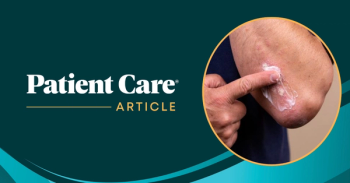
Recurrent Rash That Resists Multiple Therapies
For 3 years, my 30-year-old patient has had outbreaks of small, vesicular, frequently pruritic lesions on the neck and upper trunk.
For 3 years, my 30-year-old patient has had outbreaks of small, vesicular, frequently pruritic lesions on the neck and upper trunk (Figure). The outbreaks last days to weeks; they come and go without any identifiable aggravating or alleviating factors. Her condition has not responded to numerous therapies, including various over-the-counter (OTC) soaps, OTC lotions, antihistamines, pimecrolimus, tretinoin gel, clindamycin and benzoyl peroxide gel, ammonium lactate, and several antibiotics. She does not take any long-term medications or dietary supplements. Do you have any suggestions for an effective treatment?
-----Beverly D. McCabe, NP
Newbern, NC
The differential diagnosis, based on the photograph of your patient, includes acne, staphylococcal folliculitis, and Pityrosporum folliculitis. Because she has not responded to multiple treatments for acne and bacterial folliculitis (eg, topical retinoids, topical antibiotics, and systemic antibiotics), this woman most likely has Pityrosporum folliculitis.
Pityrosporum folliculitis is caused by Pityrosporum orbiculare, a lipophilic yeast. It usually affects young to middle-aged adults. The eruption typically occurs on the chest, back, shoulders, upper arms, and occasionally the neck. On examination, there are monomorphous follicular papules and pustules, about 2 to 3 mm in diameter. The eruption can be asymptomatic but more typically is pruritic. The lesions can occur intermittently and may be exacerbated by warm, humid weather. Pityrosporum folliculitis may respond to topical antifungal medications, such as ketoconazole shampoo or ciclopirox shampoo or lotion. However, successful treatment may require an oral antifungal agent (eg, ketoconazole, itraconazole, or fluconazole).
-----Caron Grin, MD
Clinical Professor of Dermatology
University of Connecticut Health Center
Farmington
Newsletter
Enhance your clinical practice with the Patient Care newsletter, offering the latest evidence-based guidelines, diagnostic insights, and treatment strategies for primary care physicians.























































































































































































































































































































